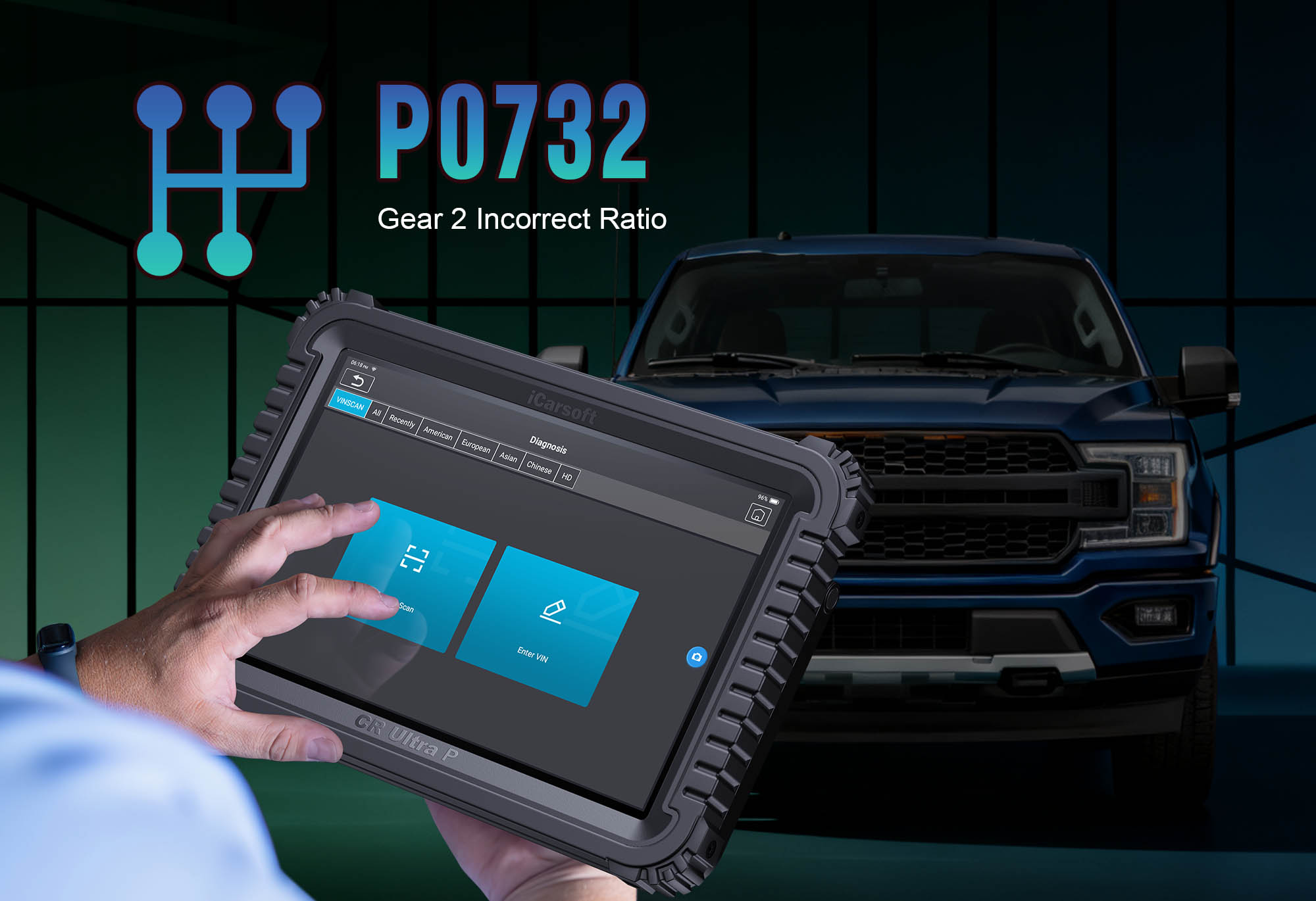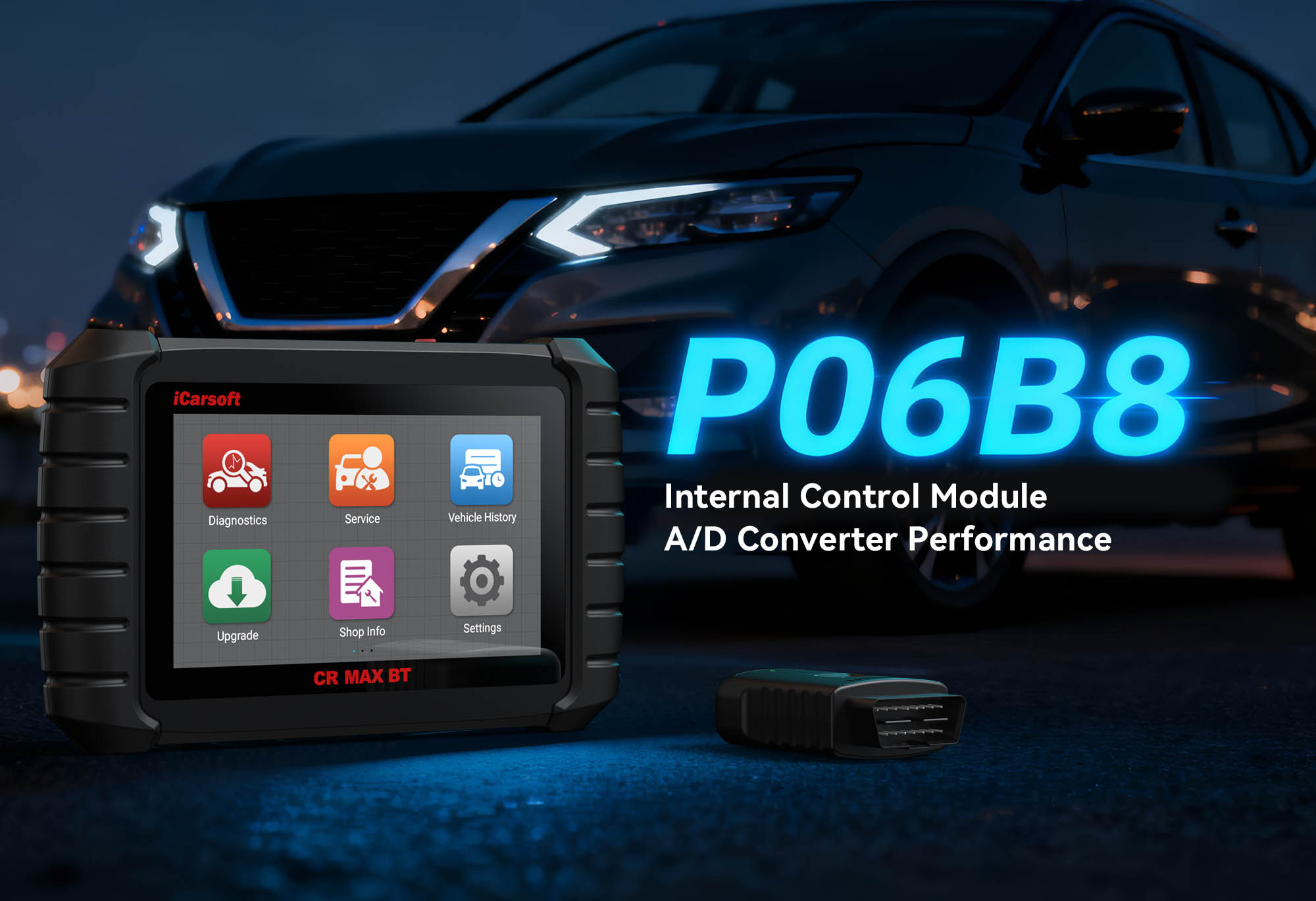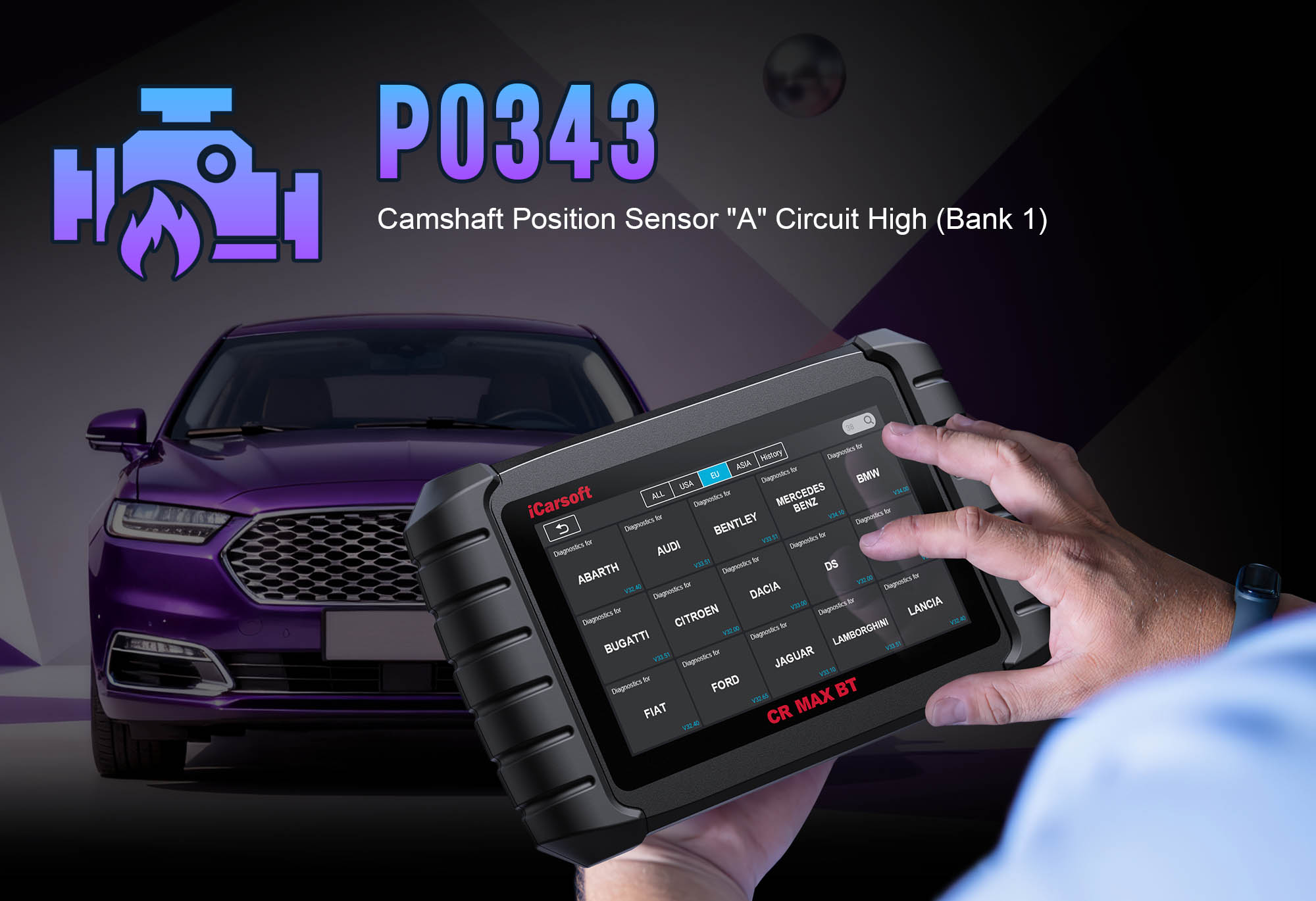Diagnose & Clear P2106 with iCarsoft CR Ultra P
If your vehicle loses acceleration power, gets stuck in "limp mode," or triggers a check engine light with a "reduced power" warning, a diagnostic scan will likely return P2106. This OBD-II code stands for "Throttle Actuator Control System - Forced Limited Power"—a critical fault indicating the Engine Control Module (ECM) has detected a malfunction in the throttle actuator system and intentionally restricts engine power to prevent damage. The throttle actuator (electronic throttle body) regulates air intake based on driver input; when it fails or sends erratic signals, the ECM activates a safety protocol to limit performance.
Basic scanners might only flag a "throttle system issue" but can’t test actuator responsiveness, monitor live voltage, or recalibrate the throttle body—leaving you guessing between a faulty actuator, wiring damage, or ECM glitch. The iCarsoft CR Ultra P, with its OE-level engine diagnostics, bi-directional controls, and topology mapping, solves this. Let’s break down how to diagnose and resolve P2106 with precision, using the CR Ultra P’s unique features to restore full throttle control and eliminate limp mode.
Understanding P2106: Causes & Key Symptoms
The electronic throttle body (throttle actuator) replaces traditional mechanical cables, using sensors and motors to adjust the throttle plate position. The ECM relies on two key signals—throttle position sensor (TPS) 1 and TPS 2—to verify accurate operation. P2106 triggers when the ECM detects a mismatch between these signals, a failed actuator motor, or an electrical fault, prompting it to force limited power (typically capping RPMs at 2,000–3,000 and speed at 30–40 mph).
Key Symptoms of P2106
-
Forced Reduced Power: The vehicle accelerates sluggishly, unable to exceed low RPMs even when the gas pedal is pressed fully.
-
Limp Mode Activation: The ECM locks the throttle in a safe position, preventing high-speed driving to protect the engine.
-
Illuminated Warning Lights: Both the check engine light and "reduced power" or "engine power limited" warning lights activate.
-
Unresponsive Throttle: The engine may idle roughly or stall, and the gas pedal may feel "dead" (no acceleration response).
-
Intermittent Faults: Symptoms may come and go (e.g., work cold but fail when warm) due to loose connections or partial actuator wear.
Common Causes of P2106
|
Cause
|
Description
|
|
Faulty Electronic Throttle Body
|
Internal motor failure, worn throttle plate, or damaged TPS sensors prevent accurate position control.
|
|
Wiring/Electrical Issues
|
Frayed wires, corroded connectors, or short circuits disrupt signal flow between the throttle actuator and ECM.
|
|
Dirty Throttle Body
|
Carbon buildup on the throttle plate restricts movement, causing erratic TPS readings.
|
|
ECM Malfunction
|
Rarely, the ECM’s internal circuit for processing throttle signals fails, misinterpreting data.
|
|
Low Battery Voltage
|
A weak battery (below 12V) can disrupt the throttle actuator’s electrical operation, triggering false faults.
|
Why iCarsoft CR Ultra P Excels at Diagnosing P2106
The CR Ultra P outperforms basic tools with features tailored to throttle actuator system diagnostics—critical for resolving P2106 accurately:
Bi-Directional Throttle Actuator Testing
Activates the throttle motor manually to test responsiveness, distinguishing mechanical (stuck plate) from electrical (motor failure) issues.
Live Data Monitoring
Tracks TPS 1/TPS 2 voltages, throttle plate position, and ECM commands in real time, identifying signal mismatches.
Throttle Body Calibration
Includes OE-level adaptation relearn functions to sync the throttle body with the ECM post-repair.
Transmission Topology Mapping
Visualizes the entire throttle actuator circuit as a color-coded diagram, highlighting corrosion or breaks.
Global Vehicle Coverage
Supports 200+ brands and engine types, including 2018+ models with DoIP/CAN-FD protocols.
CR Link VCI Compatibility
Seamless connectivity with modern ECMs, ensuring reliable throttle system diagnostics.
41 Hot Service Functions
Includes ECM reset, throttle adaptation, and sensor validation—essential for restoring full power.
Step-by-Step: Diagnose P2106 with iCarsoft CR Ultra P
-
Safety First & Initial Checks
1. Turn off engine and allow to cool completely to avoid burns when accessing the throttle body.
2. Check battery voltage: Use Battery Tester Module to verify 12.4–12.7V (low voltage = charge/replace).
3. Locate components via Component Location > Engine > Throttle Actuator System:
- Electronic Throttle Body: Mounted on intake manifold (connected to air intake hose).
- Throttle Actuator Connector: 6–8 pin plug on throttle body.
- Wiring Harness: Runs from throttle body to ECM (under hood/dashboard).
-
Connect Tool & Confirm P2106
Plug CR Ultra P into OBD-II port, pair with CR Link VCI. Select AutoVIN Identify to retrieve engine type, throttle actuator specs (voltage/resistance), and ECM protocol. Navigate to Engine > Fault Codes > Read Codes to confirm P2106. Tap Code Details for insights (e.g., "Chevrolet Silverado: TPS 1/TPS 2 Mismatch"). Note related codes (P2101, P2102) and resolve P2106 first.
-
Test Throttle Actuator Function
1. Throttle Plate Movement Test: Turn ignition to "ON" (engine off), go to Engine > Special Functions > Throttle Actuator Control. Select "Open/Close Throttle"—listen for motor whir and confirm plate movement (no movement = faulty actuator).
2. TPS Signal Validation: Start engine (if possible), go to Engine > Live Data > Throttle Position Sensors. Idle: TPS1=0.5–1.0V, TPS2=4.0–4.5V; full throttle: reverse. Mismatch = faulty TPS sensors.
3. Resistance Test: Disconnect actuator connector, set tool to "Ohms"—probe motor pins (5–10 ohms typical); infinite = motor failure.
-
Inspect Wiring, Connectors, & Throttle Body
1. Wiring Harness Inspection: Look for frayed insulation, rodent damage, or metal contact; repair with heat-shrink tubing.
2. Connector Cleaning: Disconnect actuator/ECM connectors; clean corrosion with contact cleaner, straighten bent pins, apply dielectric grease.
3. Throttle Body Cleaning Check: Remove air intake hose, inspect for carbon buildup. Clean with throttle body cleaner if dirty; reinstall.
-
Repair or Service to Fix P2106
- Throttle Body Replacement: Remove old unit, install OEM-compatible throttle body; run Engine > Special Functions > Throttle Body Adaptation to sync with ECM.
- Wiring Repairs: Replace damaged wires with 18-gauge automotive wire; secure harness with zip ties.
- ECM Reset & Relearn: Run Engine > Special Functions > ECM Reset; perform Throttle Adaptation Relearn.
- Battery Service: Charge or replace weak battery; confirm stable voltage (12.4V+) with Battery Test.
-
Clear P2106 & Validate the Repair
1. Clear Code: Navigate to Engine > Fault Codes > Clear Codes—confirm P2106 deletion.
2. Test Drive: Operate 20–30 miles, testing full acceleration; verify no "reduced power" warnings. Monitor Live Data for matching TPS signals.
3. Post-Repair Validation: Run Engine > System Check—"No Faults Detected" confirms function.
4. Save Report: Document diagnostics/repairs via History & Report for future reference.
Preventing P2106 Recurrence
-
Regular Throttle Body Cleaning: Use Service Reminder to clean every 30,000 miles—prevents carbon buildup.
-
Battery Maintenance: Test voltage quarterly with the CR Ultra P’s battery tester to avoid low-voltage faults.
-
Connector Inspections: Check throttle actuator/ECM connectors every 15,000 miles—clean and secure loose connections.
-
Free Software Updates: Use One-Key Upgrade to add advanced throttle system diagnostic features for 3 years.
Conclusion
P2106’s forced limited power disrupts drivability and signals potential engine damage. The iCarsoft CR Ultra P simplifies diagnosis with bi-directional testing, real-time monitoring, and topology mapping, ensuring you fix the root cause—whether a faulty throttle body, wiring issue, or low battery—without guesswork.
With 200+ brand coverage and 41 service functions, the CR Ultra P is more than a P2106 fix—it’s a long-term investment in engine reliability. Restore full throttle control, eliminate limp mode, and drive with confidence—all with one professional-grade diagnostic tool.





